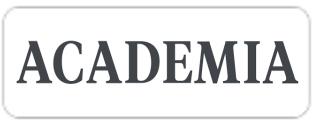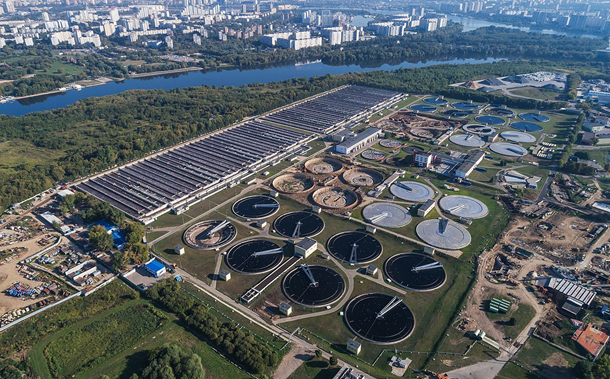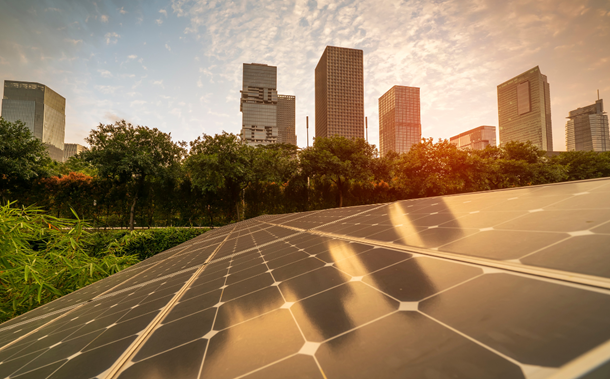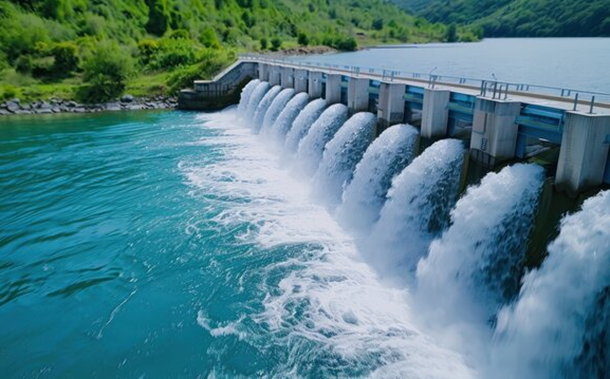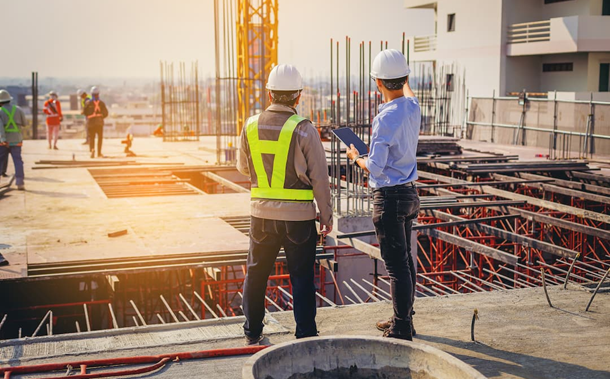Corrosion Resistance of Reinforcing Steel in Concrete Using Natural Fibers Treated with Used Engine Oil
Downloads
Doi:10.28991/CEJ-2024-010-04-02
Full Text:PDF
Downloads
[2] Van Steen, C., Nasser, H., Verstrynge, E., & Wevers, M. (2022). Acoustic emission source characterisation of chloride-induced corrosion damage in reinforced concrete. Structural Health Monitoring, 21(3), 1266–1286. doi:10.1177/14759217211013324.
[3] Tesic, K., Baricevic, A., Serdar, M., & Gucunski, N. (2023). Quantifying the impact of parameters of chloride-induced reinforcement corrosion on the GPR signal. Construction and Building Materials, 399, 132594. doi:10.1016/j.conbuildmat.2023.132594.
[4] Flores Nicolás, A., Menchaca Campos, E. C., Flores Nicolás, M., Martínez González, J. J., González Noriega, O. A., & Uruchurtu Chavarín, J. (2024). Influence of Recycled High-Density Polyethylene Fibers on the Mechanical and Electrochemical Properties of Reinforced Concrete. Fibers, 12(3), 24. doi:10.3390/fib12030024.
[5] Mohammed, M., Rahman, R., Mohammed, A. M., Adam, T., Betar, B. O., Osman, A. F., & Dahham, O. S. (2022). Surface treatment to improve water repellence and compatibility of natural fiber with polymer matrix: Recent advancement. Polymer Testing, 115. doi:10.1016/j.polymertesting.2022.107707.
[6] Juárez Alvarado, C. A., Rodríguez López, P., Rivera Villarreal, R., & Rechy de Von Roth, M. D. L. í. (2004). Use of natural lechuguilla fibers as reinforcement in concrete. Ingenierías, 7(22), 7-19. (In Spanish).
[7] Juradin, S., Boko, I., Netinger GrubeŠ¡a, I., Jozić, D., & MrakovÄić, S. (2021). Influence of different treatment and amount of Spanish broom and hemp fibres on the mechanical properties of reinforced cement mortars. Construction and Building Materials, 273, 121702. doi:10.1016/j.conbuildmat.2020.121702.
[8] Ferreira, S. R., Silva, F. de A., Lima, P. R. L., & Toledo Filho, R. D. (2017). Effect of hornification on the structure, tensile behavior and fiber matrix bond of sisal, jute and curauá fiber cement based composite systems. Construction and Building Materials, 139, 551–561. doi:10.1016/j.conbuildmat.2016.10.004.
[9] Xie, X., Zhou, Z., & Yan, Y. (2019). Flexural properties and impact behaviour analysis of bamboo cellulosic fibers filled cement-based composites. Construction and Building Materials, 220, 403–414. doi:10.1016/j.conbuildmat.2019.06.029.
[10] Lumingkewas, R. H., Husen, A., & Andrianus, R. (2017). Effect of Fibers Length and Fibers Content on the Splitting Tensile Strength of Coconut Fibers Reinforced Concrete Composites. Key Engineering Materials, 748, 311–315. doi:10.4028/www.scientific.net/kem.748.311.
[11] Machaka, M., Basha, H., Abou Chakra, H., & Elkordi, A. (2014). Alkali treatment of fan palm natural fibers for use in fiber reinforced concrete. European Scientific Journal, 10(12), 186-195.
[12] Madhwani, H., Sathyan, D., & Mini, K. M. (2019). Study on durability and hardened state properties of sugarcane bagasse fiber reinforced foam concrete. Materials Today: Proceedings, 46, 4782–4787. doi:10.1016/j.matpr.2020.10.313.
[13] Ighalo, J. O., Adeyanju, C. A., Ogunniyi, S., Adeniyi, A. G., & Abdulkareem, S. A. (2021). An empirical review of the recent advances in treatment of natural fibers for reinforced plastic composites. Composite Interfaces, 28(9), 925–960. doi:10.1080/09276440.2020.1826274.
[14] Ahmad, J., & Zhou, Z. (2022). Mechanical Properties of Natural as well as Synthetic Fiber Reinforced Concrete: A Review. Construction and Building Materials, 333, 127353. doi:10.1016/j.conbuildmat.2022.127353.
[15] Ramamoorthy, S. K., Di, Q., Adekunle, K., & Skrifvars, M. (2012). Effect of water absorption on mechanical properties of soybean oil thermosets reinforced with natural fibers. Journal of Reinforced Plastics and Composites, 31(18), 1191–1200. doi:10.1177/0731684412455257.
[16] Kim, H., & Seo, D. (2007). Influence of water saturation on fracture toughness in woven natural fiber reinforced composites. Advanced Composite Materials, 16(2), 83–94. doi:10.1163/156855107780918955.
[17] Symington, M. C., Banks, W. M., West, O. D., & Pethrick, R. A. (2009). Tensile testing of cellulose based natural fibers for structural composite applications. Journal of Composite Materials, 43(9), 1083–1108. doi:10.1177/0021998308097740.
[18] Zhang, D., Tan, K. H., Dasari, A., & Weng, Y. (2020). Effect of natural fibers on thermal spalling resistance of ultra-high-performance concrete. Cement and Concrete Composites, 109, 103512. doi:10.1016/j.cemconcomp.2020.103512.
[19] Shah, I., Li, J., Yang, S., Zhang, Y., & Anwar, A. (2022). Experimental Investigation on the Mechanical Properties of Natural Fiber Reinforced Concrete. Journal of Renewable Materials, 10(5), 1307–1320. doi:10.32604/jrm.2022.017513.
[20] Onuaguluchi, O., & Banthia, N. (2016). Plant-based natural fibre reinforced cement composites: A review. Cement and Concrete Composites, 68, 96–108. doi:10.1016/j.cemconcomp.2016.02.014.
[21] Paricaguán, B., Albano, C., Palacios, J., Torres, R., Camacho, N., Infante, J., & Alvarado, M. (2013). Thermal degradation of coconut fibers with chemical treatment from concrete mixtures (Kinetic Study). Revista Ingeniería UC, 20(2), 60-67.
[22] Li, M., Pu, Y., Thomas, V. M., Yoo, C. G., Ozcan, S., Deng, Y., Nelson, K., & Ragauskas, A. J. (2020). Recent advancements of plant-based natural fiber–reinforced composites and their applications. Composites Part B: Engineering, 200, 108254. doi:10.1016/j.compositesb.2020.108254.
[23] Zhang, K., Cao, Q., Jin, L., Li, P., & Zhang, X. (2017). A novel route to utilize waste engine oil by blending it with water and coal. Journal of Hazardous Materials, 332, 51–58. doi:10.1016/j.jhazmat.2017.02.052.
[24] Chen, H., Qin, R., & Lau, D. (2021). Recycling used engine oil in concrete design mix: An ecofriendly and feasible solution. Journal of Cleaner Production, 329, 129555. doi:10.1016/j.jclepro.2021.129555.
[25] Yousif, B. F., Orupabo, C., & Azwa, Z. N. (2013). Characteristics of Kenaf Fiber Immersed in Different Solutions. Journal of Natural Fibers, 9(4), 207–218. doi:10.1080/15440478.2012.733149.
[26] Wong, C., McGowan, T., Bajwa, S. G., & Bajwa, D. S. (2016). Impact of fiber treatment on the oil absorption characteristics of plant fibers. BioResources, 11(3), 6452–6463. doi:10.15376/biores.11.3.6452-6463.
[27] Ramli, M., Kwan, W. H., & Abas, N. F. (2013). Strength and durability of coconut-fiber-reinforced concrete in aggressive environments. Construction and Building Materials, 38, 554–566. doi:10.1016/j.conbuildmat.2012.09.002.
[28] ASTM C150/C150. (2021). Standard Specification for Portland Cement. ASTM International, Pennsylvania, United States. doi:10.1520/C0150_C0150M-20.
[29] Martinez, S., Teresa, M., Sánchez Herrera, L. M., Torres García, G., & Garcia Paredes, J. D. (2012). Value network of mango and its waste based on nutritional and functional properties. Revista Mexicana de Agronegocios, 1-30.
[30] Escalante, M. A. M. (2018). Cultural appropriation: The case of traditional crafts. Anales del Museo Nacional de Antropología. Dirección General de Bellas Artes y de Conservación y Restauración de Bienes Culturales. Available online: https://dialnet.unirioja.es/servlet/revista?codigo=81 (accessed on March 2024).
[31] Djafari Petroudy, S. R. (2017). Physical and mechanical properties of natural fibers. In Advanced High Strength Natural Fibre Composites in Construction: Woodhead Publishing, 59–83. doi:10.1016/B978-0-08-100411-1.00003-0.
[32] Mújica-Paz, H., Valdez-Fragoso, A., López-Malo, A., Palou, E., & Welti-Chanes, J. (2003). Impregnation properties of some fruits at vacuum pressure. Journal of Food Engineering, 56(4), 307–314. doi:10.1016/S0260-8774(02)00155-3.
[33] Ferreira, D. P., Cruz, J., & Fangueiro, R. (2018). Surface modification of natural fibers in polymer composites. In Green Composites for Automotive Applications: Woodhead Publishing 3–41. doi:10.1016/B978-0-08-102177-4.00001-X.
[34] Assaad, J. J. (2013). Disposing used engine oils in concrete - Optimum dosage and compatibility with water reducers. Construction and Building Materials, 44, 734–742. doi:10.1016/j.conbuildmat.2013.03.078.
[35] Shafiq, N., Choo, C. S., & Isa, M. H. (2018). Effects of used engine oil on slump, compressive strength and oxygen permeability of normal and blended cement concrete. Construction and Building Materials, 187, 178–184. doi:10.1016/j.conbuildmat.2018.07.195.
[36] Sekar, S., Suresh Kumar, S., Vigneshwaran, S., & Velmurugan, G. (2020). Evaluation of Mechanical and Water Absorption Behavior of Natural Fiber-Reinforced Hybrid Biocomposites. Journal of Natural Fibers, 19(5), 1–11. doi:10.1080/15440478.2020.1788487.
[37] Sumesh, K. R., Kavimani, V., Rajeshkumar, G., Indran, S., & Khan, A. (2022). Mechanical, water absorption and wear characteristics of novel polymeric composites: Impact of hybrid natural fibers and oil cake filler addition. Journal of Industrial Textiles, 51(4), 5910S-5937S. doi:10.1177/1528083720971344.
[38] Nine, M. J., Kabiri, S., Sumona, A. K., Tung, T. T., Moussa, M. M., & Losic, D. (2020). Superhydrophobic/superoleophilic natural fibres for continuous oil-water separation and interfacial dye-adsorption. Separation and Purification Technology, 233, 116062. doi:10.1016/j.seppur.2019.116062.
[39] ASTM C143/C143M-20. (2020). Standard Test Method for Slump of Hydraulic-Cement Concrete. ASTM International, Pennsylvania, United States. doi:10.1520/C0143_C0143M-20.
[40] ASTM C231/C231M-22. (2024). Standard Test Method for Air Content of Freshly Mixed Concrete by the Pressure Method. ASTM International, Pennsylvania, United States. doi:10.1520/C0231_C0231M-22.
[41] ASTM C31/C31M-23. (2024). Standard Practice for Making and Curing Concrete Test Specimens in the Field. ASTM International, Pennsylvania, United States. doi:10.1520/C0031_C0031M-23.
[42] ASTM C78/C78M-22. (2022). Standard Test Method for Flexural Strength of Concrete (Using Simple Beam with Center-Point Loading). ASTM International, Pennsylvania, United States. doi:10.1520/C0078_C0078M-22.
[43] Yaowarat, T., Suddeepong, A., Hoy, M., Horpibulsuk, S., Takaikaew, T., Vichitcholchai, N., Arulrajah, A., & Chinkulkijniwat, A. (2021). Improvement of flexural strength of concrete pavements using natural rubber latex. Construction and Building Materials, 282, 122704. doi:10.1016/j.conbuildmat.2021.122704.
[44] Rodrigues, R., Gaboreau, S., Gance, J., Ignatiadis, I., & Betelu, S. (2021). Reinforced concrete structures: A review of corrosion mechanisms and advances in electrical methods for corrosion monitoring. Construction and Building Materials, 269, 121240. doi:10.1016/j.conbuildmat.2020.121240.
[45] ASTM C876-09. (2016). Standard Test Method for Corrosion Potentials of Uncoated Reinforcing Steel in Concrete. ASTM International, Pennsylvania, United States. doi:10.1520/C0876-09.
[46] Flores-Nicolás, A., Flores-Nicolás, M., & Uruchurtu-Chavarín, J. (2021). Corrosion effect on reinforced concrete with the addition of graphite powder and its evaluation on physical-electrochemical properties. Revista ALCONPAT, 11(1), 18–33. doi:10.21041/ra.v11i1.501.
[47] Mills, D., Lambert, P., & Yang, S. (2021). Electrochemical noise measurement to assess corrosion of steel reinforcement in concrete. Materials, 14(18), 5392. doi:10.3390/ma14185392.
[48] Calabrese, L., Galeano, M., & Proverbio, E. (2023). Data Mining Applied to the Electrochemical Noise Technique in the Time/Frequency Domain for Stress Corrosion Cracking Recognition. Corrosion and Materials Degradation, 4(4), 659–679. doi:10.3390/cmd4040034.
[49] Andrade, C., & Alonso, C. (2004). Test methods for on-site corrosion rate measurement of steel reinforcement in concrete by means of the polarization resistance method. Materials and Structures, 37(9), 623–643. doi:10.1007/bf02483292.
[50] ASTM G59-97. (2020). Standard Test Method for Conducting Potentiodynamic Polarization Resistance Measurements. ASTM International, Pennsylvania, United States. doi:10.1520/G0059-97R20.
[51] Lukács, Z., & Kristóf, T. (2023). Linear transformations of the Butler–Volmer equation. Electrochemistry Communications, 154, 107556. doi:10.1016/j.elecom.2023.107556.
[52] Román, A. S., Barrientos, M. S., Harms, F., Mendez, C. M., & Ares, A. E. (2016, March). Corrosion resistance of AISI 304L stainless steel in soy biodiesel. Anales (Asociación Física Argentina), 27(1). (In Spanish).
[53] Sohail, M. G., Laurens, S., Deby, F., Balayssac, J. P., & Al Nuaimi, N. (2021). Electrochemical corrosion parameters for active and passive reinforcing steel in carbonated and sound concrete. Materials and Corrosion, 72(12), 1854–1871. doi:10.1002/maco.202112569.
[54] Da, B., Yu, H., Ma, H., & Wu, Z. (2018). Reinforcement corrosion research based on the linear polarization resistance method for coral aggregate seawater concrete in a marine environment. Anti-Corrosion Methods and Materials, 65(5), 458–470. doi:10.1108/acmm-03-2018-1911.
[55] Niu, S., Luo, J., Chen, M. T., Chen, Z., Wang, X., Bai, X., & Li, J. (2023). Experimental study of cement-based materials under sulfate attack environment using Electrochemical Impedance Spectroscopy. International Journal of Electrochemical Science, 18(5), 100133. doi:10.1016/j.ijoes.2023.100133.
[56] Sobhani, J., & Najimi, M. (2013). Electrochemical impedance behavior and transport properties of silica fume contained concrete. Construction and Building Materials, 47, 910–918. doi:10.1016/j.conbuildmat.2013.05.010.
[57] Björnström, J., & Chandra, S. (2003). Effect of superplasticizers on the rheological properties of cements. Materials and Structures, 36(10), 685–692. doi:10.1007/bf02479503.
[58] Varghese, R., & Eapen Sakaria, P. (2017). Experimental Investigation on the Properties of Fresh and Hardened Concrete with Used Engine Oil as Super Plasticizer. International Research Journal of Engineering and Technology, 04(05), 2230–2236. doi:10.13140/RG.2.2.26601.34400.
[59] Hasan, B., & Ali, M. (2023). Potential of used-petrol-engine-oil as an admixture in cement composites: A detailed review. AIP Conference Proceedings. doi:10.1063/5.0129983.
[60] Lian, C., Zhuge, Y., & Beecham, S. (2011). The relationship between porosity and strength for porous concrete. Construction and Building Materials, 25(11), 4294–4298. doi:10.1016/j.conbuildmat.2011.05.005.
[61] Solís-Carcaño, R. í“. M. E. L., & Moreno, E. I. (2006). Analysis of the porosity of concrete with limestone aggregate. Revista de la Facultad de Ingeniería de la UCV, 21(3), 57-68. (In Spanish).
[62] Solís Carcaño, R. G., & Alcocer Fraga, M. í. (2019). Durabilidad del concreto con agregados de alta absorción. Ingeniería Investigación y Tecnología, 20(4), 1–13. doi:10.22201/fi.25940732e.2019.20n4.039. (In Spanish).
[63] Wang, L., Jin, M., Guo, F., Wang, Y. A. N., & Tang, S. (2021). Pore structural and fractal analysis of the influence of fly ash and silica fume on the mechanical property and abrasion resistance of concrete. Fractals, 29(2), 2140003. doi:10.1142/S0218348X2140003X.
[64] Nicolás, A. F. (2021). Evaluation of the corrosion and protection of reinforcing steel embedded in concrete in the presence of graphite and its effect on the mechanical-electrochemical properties. Master Thesis, Universidad Autónoma del Estado de Morelos, Cuernavaca, Mexico. (In Spanish).
[65] Yaphary, Y. L., Lam, R. H. W., & Lau, D. (2020). Reduction in cement content of normal strength concrete with used engine oil (UEO) as chemical admixture. Construction and Building Materials, 261, 119967. doi:10.1016/j.conbuildmat.2020.119967.
[66] Shafiq, N., Nuruddin, M. F., & Beddu, S. (2011). Properties of concrete containing used engine oil. International Journal of Sustainable Construction Engineering and Technology, 2(1), 72-82.
[67] Abdelaziz, G. E. (2011). Utilization of used-engine oil in concrete as a chemical admixture. Benha University, Egypt, 14-17.
[68] Burbano-Garcia, C., Hurtado, A., Silva, Y. F., Delvasto, S., & Araya-Letelier, G. (2021). Utilization of waste engine oil for expanded clay aggregate production and assessment of its influence on lightweight concrete properties. Construction and Building Materials, 273, 121677. doi:10.1016/j.conbuildmat.2020.121677.
[69] Alsadey, S. (2018). Effects of used engine oil as chemical admixture in concrete. International Journal of Energy and Sustainable Development, 3(2), 38-43.
[70] Attom, M., Hawileh, R., & Naser, M. (2013). Investigation on concrete compressive strength mixed with sand contaminated by crude oil products. Construction and Building Materials, 47, 99–103. doi:10.1016/j.conbuildmat.2013.04.042.
[71] Zhou, X., Saini, H., & Kastiukas, G. (2017). Engineering properties of treated natural hemp fiber-reinforced concrete. Frontiers in Built Environment, 3, 33. doi:10.3389/fbuil.2017.00033.
[72] Hussen, S. S. (2016). Using of Industrial Waste as a Green Chemical Admixture in Concrete. Kufa Journal of Engineering, 7(1), 104–114. doi:10.30572/2018/kje/711216.
[73] Al-Attar, T. S. (2013). A quantitative evaluation of bond strength between coarse aggregate and cement mortar in concrete. European scientific journal, 9(6).
[74] Nadeem, H., Habib, N. Z., Aun, N. C., Zoorob, S. E., Mustaffa, Z., Mesney, R., & Suubitaa, S. (2017). Used engine oil as alternate binder for buildings - A comparative study. Proceedings of Institution of Civil Engineers: Waste and Resource Management, 170(2), 57–65. doi:10.1680/jwarm.17.00005.
[75] Song, H. W., & Saraswathy, V. (2007). Corrosion monitoring of reinforced concrete structures - A review. International Journal of Electrochemical Science, 2(1), 1–28. doi:10.1016/s1452-3981(23)17049-0.
[76] Yodsudjai, W., & Pattarakittam, T. (2017). Factors influencing half-cell potential measurement and its relationship with corrosion level. Measurement: Journal of the International Measurement Confederation, 104, 159–168. doi:10.1016/j.measurement.2017.03.027.
[77] Kakooei, S., Akil, H. M., Dolati, A., & Rouhi, J. (2012). The corrosion investigation of rebar embedded in the fibers reinforced concrete. Construction and Building Materials, 35, 564–570. doi:10.1016/j.conbuildmat.2012.04.051.
[78] Sappakittipakorn, M., & Banthia, N. (2012). Corrosion of rebar and role of fiber reinforced concrete. Journal of Testing and Evaluation, 40(1). doi:10.1520/jte103873.
[79] Andrade, C., & Alonso, C. (1996). Corrosion rate monitoring in the laboratory and on-site. Construction and Building Materials, 10(5), 315–328. doi:10.1016/0950-0618(95)00044-5.
[80] Daniyal, M., & Akhtar, S. (2020). Corrosion assessment and control techniques for reinforced concrete structures: a review. Journal of Building Pathology and Rehabilitation, 5(1), 1–20. doi:10.1007/s41024-019-0067-3.
[81] Paul, S., van Zijl, G., & Š avija, B. (2020). Effect of Fibers on Durability of Concrete: A Practical Review. Materials, 13(20), 4562. doi:10.3390/ma13204562.
[82] Zhao, B., Li, J. H., Hu, R. G., Du, R. G., & Lin, C. J. (2007). Study on the corrosion behavior of reinforcing steel in cement mortar by electrochemical noise measurements. Electrochimica Acta, 52(12), 3976–3984. doi:10.1016/j.electacta.2006.11.015.
[83] Almashakbeh, Y., Saleh, E., & Al-Akhras, N. M. (2022). Evaluation of Half-Cell Potential Measurements for Reinforced Concrete Corrosion. Coatings, 12(7), 975. doi:10.3390/coatings12070975.
[84] Alexandre Reginato, L., Somensi Lorenzi, L., & Carlos Pinto da Silva Filho, L. (2023). Corrosion in reinforced concrete: Diagnostics through Potential Corrosion Technique. doi:10.21203/rs.3.rs-3156721/v3.
[85] Mansfeld, F., Sun, Z., & Hsu, C. H. (2001). Electrochemical noise analysis (ENA) for active and passive systems in chloride media. Electrochimica Acta, 46(24–25), 3651–3664. doi:10.1016/s0013-4686(01)00643-0.
[86] Darmawan, M. S. (2010). Pitting corrosion model for reinforced concrete structures in a chloride environment. Magazine of Concrete Research, 62(2), 91–101. doi:10.1680/macr.2008.62.2.91.
[87] Dharma, S., Silitonga, A. S., Shamsuddin, A. H., Sebayang, A. H., Milano, J., Sebayang, R., Sarjianto, Ibrahim, H., Bahri, N., Ginting, B., & Damanik, N. (2023). Properties and corrosion behaviors of mild steel in biodiesel-diesel blends. Energy Sources, Part A: Recovery, Utilization and Environmental Effects, 45(2), 3887–3899. doi:10.1080/15567036.2019.1668883.
[88] Andrade, C. (2019). Propagation of reinforcement corrosion: principles, testing and modelling. Materials and Structures/Materiaux et Constructions, 52(1), 2. doi:10.1617/s11527-018-1301-1.
[89] Blunt, J., Jen, G., & Ostertag, C. P. (2015). Enhancing corrosion resistance of reinforced concrete structures with hybrid fiber reinforced concrete. Corrosion Science, 92, 182–191. doi:10.1016/j.corsci.2014.12.003.
[90] Bertolini, L., Elsener, B., Pedeferri, P., Redaelli, E., & Polder, R. B. (2013). Corrosion of steel in concrete: prevention, diagnosis, repair. John Wiley & Sons, Hoboken, United States.
[91] Hoshi, Y., Koike, T., Tokieda, H., Shitanda, I., Itagaki, M., & Kato, Y. (2019). Non-Contact Measurement to Detect Steel Rebar Corrosion in Reinforced Concrete by Electrochemical Impedance Spectroscopy. Journal of The Electrochemical Society, 166(11), C3316–C3319. doi:10.1149/2.0371911jes.
[92] Dhouibi, L., Triki, E., & Raharinaivo, A. (2002). The application of electrochemical impedance spectroscopy to determine the long-term effectiveness of corrosion inhibitors for steel in concrete. Cement and Concrete Composites, 24(1), 35–43. doi:10.1016/S0958-9465(01)00062-2.
[93] Ribeiro, D. V., & Abrantes, J. C. C. (2016). Application of electrochemical impedance spectroscopy (EIS) to monitor the corrosion of reinforced concrete: A new approach. Construction and Building Materials, 111, 98–104. doi:10.1016/j.conbuildmat.2016.02.047.
[94] Song, G. (2000). Equivalent circuit model for AC electrochemical impedance spectroscopy of concrete. Cement and Concrete Research, 30(11), 1723–1730. doi:10.1016/S0008-8846(00)00400-2.
[95] Park, J., & Jung, M. (2021). Evaluation of the corrosion behavior of reinforced concrete with an inhibitor by electrochemical impedance spectroscopy. Materials, 14(19), 5508. doi:10.3390/ma14195508.
[96] Dorothy, R., Sasilatha, T., & Rajendran, S. (2021). Corrosion resistance of mild steel (Hull plate) in sea water in the presence of a coating of an oil extract of plant materials. International Journal of Corrosion and Scale Inhibition, 10(2), 676–699. doi:10.17675/2305-6894-2021-10-2-13.
[97] Fattah-alhosseini, A., Taheri Shoja, S., Heydari Zebardast, B., & Mohamadian Samim, P. (2011). An Electrochemical Impedance Spectroscopic Study of the Passive State on AISI 304 Stainless Steel. International Journal of Electrochemistry, 2011, 1–8. doi:10.4061/2011/152143.
[98] Cellat, K., Tezcan, F., Beyhan, B., Kardaş, G., & Paksoy, H. (2017). A comparative study on corrosion behavior of rebar in concrete with fatty acid additive as phase change material. Construction and Building Materials, 143, 490–500. doi:10.1016/j.conbuildmat.2017.03.165.
- Authors retain all copyrights. It is noticeable that authors will not be forced to sign any copyright transfer agreements.
- This work (including HTML and PDF Files) is licensed under a Creative Commons Attribution 4.0 International License.![]()







